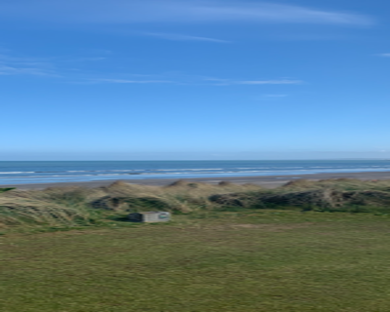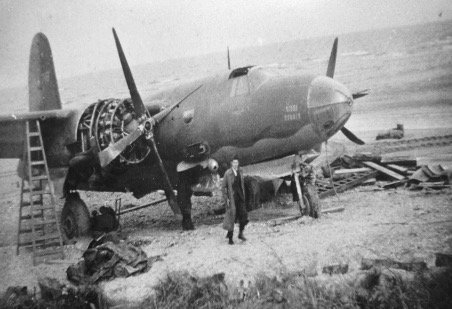The next time you climb up to the 17th tee box and are waiting for the green to clear, take a minute or two and look out on to the beach and visualise a World War 2 plane out there. As Seapoint beach had an unexpected visitor on the afternoon of 4th June 1943 with the appearance of a bomber aircraft overhead, shortly afterwards made an emergency belly landing on the beach.

Seapoint Golf Links 17th Green

Seapoint Golf Links 17th tee

John Kavanagh 8th June 1943
The location of the landing is recorded as being Seapoint Strand. The area of Seapoint, is directly due east from Termonfeckin on the coast and is associated with this crash landing. The area is now, as it was during the war, a holiday resort with golf courses on the shore. There is not much detail as to the exact location of the crash landing but according to local sources it was midway between the mouths of the Ballywater and the Boyne rivers.
The Irish authorities were at the scene quickly after the landing in the form of Local Defence Force (LDF) and the Irish military. They found that there were four crew men on the aircraft and no injuries had been suffered among them. The crew reported that they were flying the aircraft on a ferry mission from the United States via Port Lyautey in Morocco and were on the final leg of the journey to Pembroke, England. They said they had experienced high head winds which blew them off course. Having become lost and low on fuel they elected to make an emergency landing.
The aircraft, a B-26C-5-MO Marauder, built in the Martin factory at Omaha, Nebraska was a brand new bomber on a delivery flight from the United States to Europe. It was flying on the long southern Atlantic route involving flying south out of Florida to Puerto Rico, Brazil, Ascension Island, Monrovia in Liberia, Morocco and then to Port Lyautey. They had taken off in a formation of eight aircrafts from Port Lyautey but after about six hours into the flight, they ran into cloud and this resulted in them losing site of their formation. They were on radio silence at the time and maintained that silence after losing the formation. They sighted land but could not identify it and realized they were off course. They determined that they had reached Ireland or England but none of their radio aids could get signal enough to assist them. The navigator on this flight was the bombardier who declared that he had been given a crash course in navigation before departure. It was common for medium bombers and transports to fly these missions without a trained navigator.
Having failed to find any suitable landing ground the pilot flew east to the coast and chose a long stretch of beach to put the aircraft down on.
The aircraft was brought to a firm halt on the beach with no injuries to the crew. The engines had been cut prior to landing and the only obvious damage was too the underbelly of the bomber and bending of the propeller tips on each side. However, as recounted in an Irish Air Corps report, the aircraft had been put down below the high water mark and in the ensuing hours the salt water engulfed the aircraft rendering it beyond repair. In the following days, members of the Irish Air Corps, with the assistance of American military and civilian contractors from the Lockheed Overseas Airways Corporation, moved the ruined bomber up from the beach onto more solid ground. There the landing gear was dropped to place the aircraft on a more solid footing and the crews set about dismantling the aircraft
Finally, on June 30th, the dismantled remains of ‘Ridge Runner’ were taken by truck to the border and taken to an American base within Northern Ireland.
Sean Kavanagh
